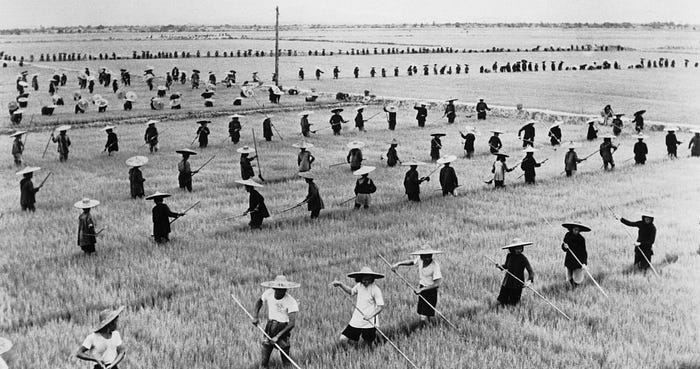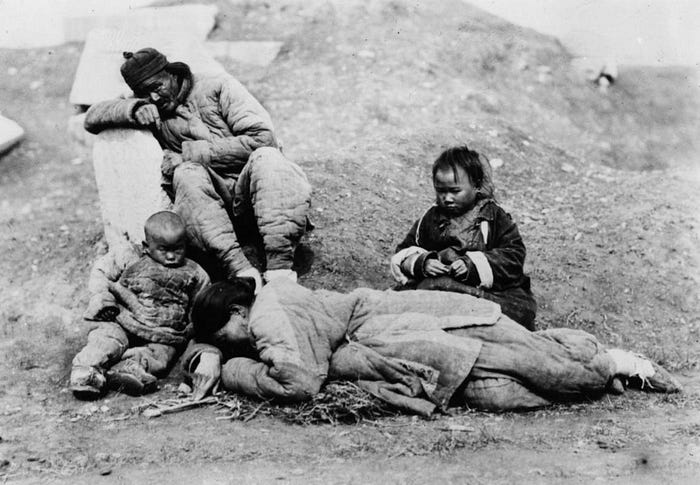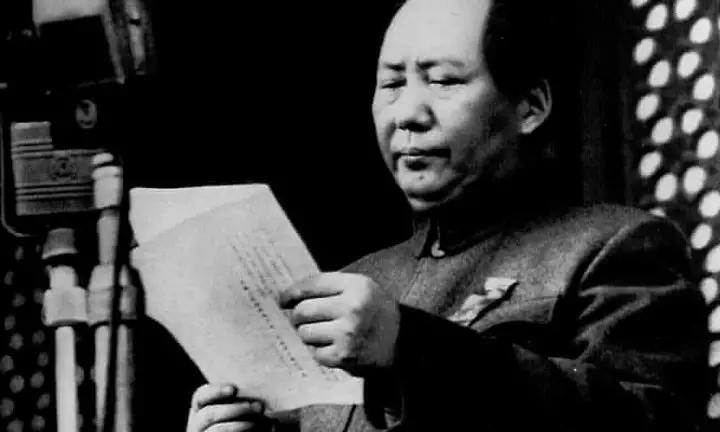 istory has its fair share of powerful individuals who only sought after creating havoc and provoking suffering for those around. In their evil and psychotic minds, they were probably thinking that they are doing something good, but in reality, everything done “for the people”, was truly done only in their own interest.
istory has its fair share of powerful individuals who only sought after creating havoc and provoking suffering for those around. In their evil and psychotic minds, they were probably thinking that they are doing something good, but in reality, everything done “for the people”, was truly done only in their own interest.
This also applies to Mao Zedong, considered to be the most fierce communist leader to have ever lived based on the number of deaths he was responsible for. Since 1954, Mao Zedong was the leader of the People’s Republic of China which he ruled using a communist political system taken to the extreme.
Presenting Communism to Zedong
Don’t take Zedong as a fool, he was well educated and in fact, his first proper role was of a Principal at the Lin Changsha primary school in 1920. It wasn’t until 1921 that he attended the First Congress of the Chinese Communist Party.
Communism was introduced after the Chinese Civil war of 1949 when the Communist political party took over the government based on what the people of China at the time wanted. Seeing how well the Soviet Union was reforming under a communist government after the Second World War, the population of China (due to its massive population) also wanted to follow the same political system, without knowing the dark side of communism.

However, Zedong was introduced to communism many years before the revolution. Working with representatives from Moscow in order to create the first communist political party in China, led to him creating many connections within the Soviet Union. At first, he was more interested in a Marxist regime, until he started meeting with Stalin who presented what was in his eyes a more “efficient” communist system, different from the ones presented by Marx or Lenin.
What I mean by efficient is using fear to control a whole population and to make them work for nothing, but Zedong took that to a whole other extreme compared to the atrocities done by Stalin. Stalin deliberately killed between 6 to 9 million Soviet citizens, most of them dying to due exhaustion from intensive labor.
As within all nations that tried to use a communist system, at first glance it seemed very promising, working together for the better life of one another until people found out the real scheme behind a Stalin or even Zedong style of communism which was never implemented “for the people” but for the leaders themselves and the acclamation of the nation in the rest of the world.
Communism for the People’s Republic of China

There is no doubt that communism had done some great things for the People’s Republic of China in a long run, but inevitably, the price paid of 70 million lives that were forcefully and brutally taken will never be a fair price to pay. A good percentage of these deaths were also caused by intensive labor, but many people were also killed for crimes, not believing in communism or simply not showing gratitude towards Mao Zedong.
Zedong’s Communist system is the ultimate form of communism that has been presented to the public (not taking into consideration North Korea), not only based on the damage it has caused to the people of China but by the extreme rules implied by the government, some of which are still respected to this day.

You may think people are not being killed in China, but the communist system within present-day China is still felt by the lower social class. Interestingly enough, the type of communistic regime set up by Mao Zedong was quite different, so much so that historians gave it its own name “Maoism”. The philosophical difference between Maoism and traditional Marxism–Leninism is that the peasantry are the revolutionary vanguard in pre-industrial societies rather than the proletariat.
In a more simplistic form, the focus was to raise the economy of the country as much as possible whilst not carrying much about the population or the quality of life. After the Sino-Soviet split of the 1960s, Zedong focused to develop the communist system based on what China needed in his own eyes, rather than the Marxism-Leninism approach carried forward by Stalin and implemented in the early period of communist China.
How did over 70 million people die?
Now to focus more on how these 78 million people died under the ruling of Zedong. In a book entitled “Tombstone: The Great Chinese Famine 1958–1962” originally written by Professor Yang Jisheng, we can see a very detailed explanation of how an estimated 36 million people had died due to famine was caused by the shortage of food.

Zedong wanted to raise the economy of China as quickly as possible, this meant exporting most of the food produced by China, leaving people with nothing to eat as all the food was exported for profit. Chinese historians still describe this as “three years of natural disaster” (as mentioned in the book by those supporting communism). It wasn’t until 1962 when Zedong realized that he was losing most of his workforce, and this in the long term was not profitable for the economy of China.

On the other hand, do not think that people were well paid for hard labor or any kind of labor for that matter. Things were so bad that people would eat the corpses of others who had recently passed away due to hunger. Some would kill others either for their scarce supply of food or simply to eat them. There are many books that talk about the Great Chinese Famine and the horrors lived in that period of time.
The rest of the estimated 42 million people died from the intense labor or were simply executed for not respecting the strict rules implied by Zedong’s regime. There is a huge debate still going on among historians on the ways these 70 so million people had died, but it is believed that most of them died either from famine or from the intensive labor they faced.
Avid Writer with invaluable knowledge of Humanity!
Upcoming historian with over 30 million views online.
“You make your own life.”





